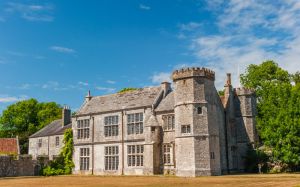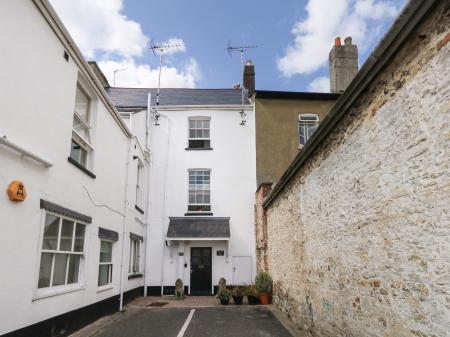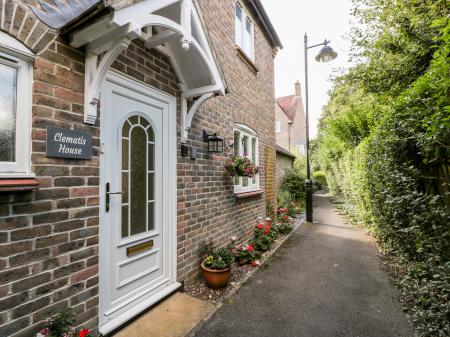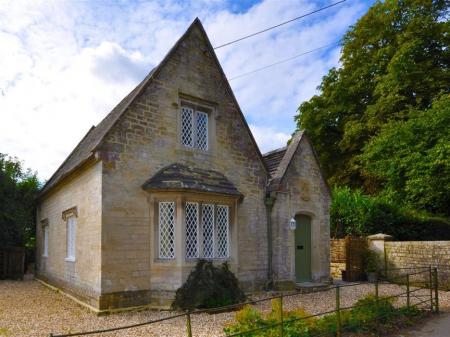
Wolfeton House is a fascinating historic building combining a medieval core with a later Elizabethan manor. The house stands in water meadows at the junction of the rivers Frome and Cerne, just north of Dorchester. The house was described by Thomas Hardy in his book A Group of Noble Dames, as 'an ivied manor'.
The house is approached through a pair of mismatched round gatehouse towers which may date to the 14th century. One tower is now a holiday cottage operated by the Landmark Trust, the other houses a small 16th-century chapel. Within the chapel are a wonderful series of carved panels depicting the signs of the Zodiac and the occupations of the months. These date to about 1510.
Beyond the gatehouse is the main house, which was probably built at the same time as the towers. However, that medieval house was rebuilt by Thomas Trenchard in the early 16th century to give us the lovely Elizabethan manor we see today.
The highlight of the Wolfeton interiors is the absolutely stunning collection of Elizabethan and Jacobean carving, oak panelling, and plastered ceilings. The doorways to the Hall and Parlour are especially ornate, embellished with carved figures representing Roman soldiers, and a figure of a wild native Briton with a club.
It is hard to overstate just how good these carvings are, and the overall effect is simply stunning. There is further highly decorated woodwork in the Parlour and a plasterwork ceiling from the late 16th century. The great stone stair is thought to be unique for its period in England. It was built around 1580 and has a pierced balustrade with figure carvings.
The Great Chamber retains its original 16th-century floor and boasts a wonderful carved fireplace. Among the figures carved on the highly decorated fireplace are Native American figures. It is thought that Sir Walter Raleigh, a frequent visitor at Wolfeton, must have described the 'Indians' to the masons carving the fireplace.
Perhaps the most famous episode in the history of Wolfeton occurred in 1506 when a ship bearing Archduke Philip of Austria and his wife Joanna (daughter of the same Ferdinand and Isabella who sponsored Christopher Columbus's voyage of discovery) was forced by storms to put into Weymouth harbour. Sir Thomas Trenchard invited the couple to stay at Wolfeton.
The royal couple later gave Trenchard medallions of themselves and a pair of Chinese porcelain bowls in thanks for his hospitality. It is possible that the porcelain was the first ever seen in England.
Many former owners of Wolfeton and their families are buried in the parish church at Charminster, to the north of the house.
On a side note, you might run across references to Wolfeton spelled as Wolveton. I was assured by the house steward that the correct spelling is Wolfeton.







 We've 'tagged' this attraction information to help you find related historic attractions and learn more about major time periods mentioned.
We've 'tagged' this attraction information to help you find related historic attractions and learn more about major time periods mentioned.



